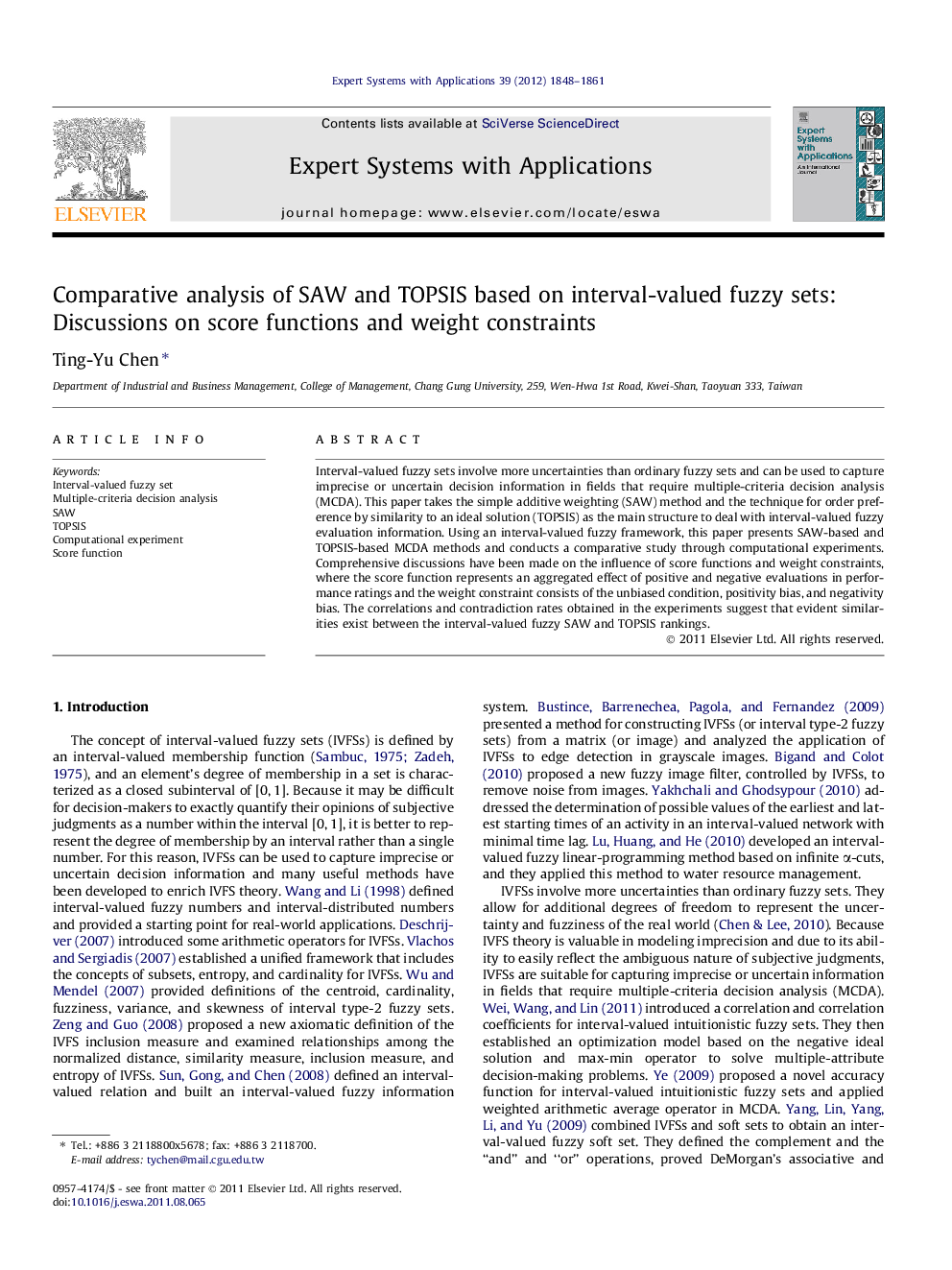| Article ID | Journal | Published Year | Pages | File Type |
|---|---|---|---|---|
| 388084 | Expert Systems with Applications | 2012 | 14 Pages |
Interval-valued fuzzy sets involve more uncertainties than ordinary fuzzy sets and can be used to capture imprecise or uncertain decision information in fields that require multiple-criteria decision analysis (MCDA). This paper takes the simple additive weighting (SAW) method and the technique for order preference by similarity to an ideal solution (TOPSIS) as the main structure to deal with interval-valued fuzzy evaluation information. Using an interval-valued fuzzy framework, this paper presents SAW-based and TOPSIS-based MCDA methods and conducts a comparative study through computational experiments. Comprehensive discussions have been made on the influence of score functions and weight constraints, where the score function represents an aggregated effect of positive and negative evaluations in performance ratings and the weight constraint consists of the unbiased condition, positivity bias, and negativity bias. The correlations and contradiction rates obtained in the experiments suggest that evident similarities exist between the interval-valued fuzzy SAW and TOPSIS rankings.
► This study takes SAW and TOPSIS as the main structure to deal with MCDA problems in the context of IVFSs. ► Computational experiments were implemented to compare the interval-valued fuzzy SAW and TOPSIS methods. ► Discussions on score functions and weight constraints. ► Interval-valued fuzzy SAW method yields extremely close results to much more complicated nonlinear forms by TOPSIS.
